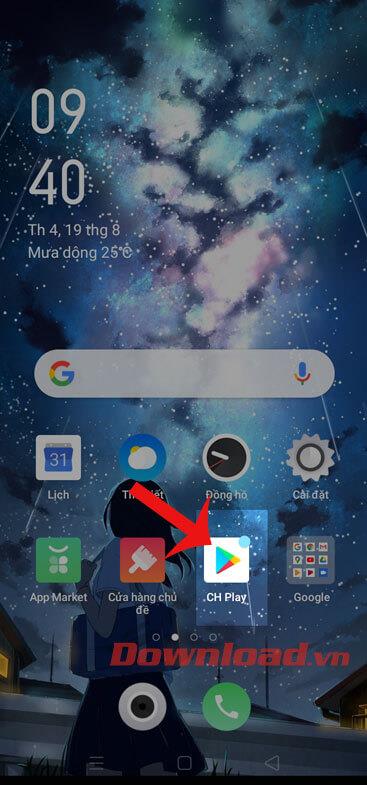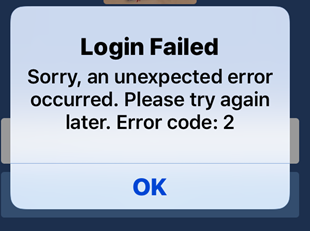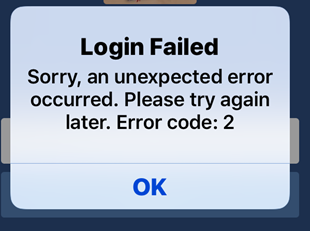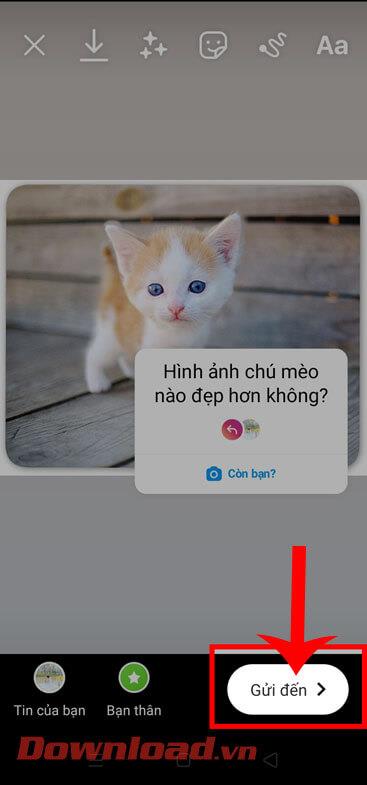How to pin comments on TikTok

How to pin comments on TikTok, TikTok allows users to pin comments easily. Here's how to pin comments on TikTok videos.
Similar to the 404 Not Found error , the 400 Bad Request is also an HTTP status code that indicates that the request you sent to the web server, usually a request to load a website, is wrong or interrupted and the server does not understand this request.
Error 400 Bad Request usually has different messages on each website, here is a list of some common types of error messages:
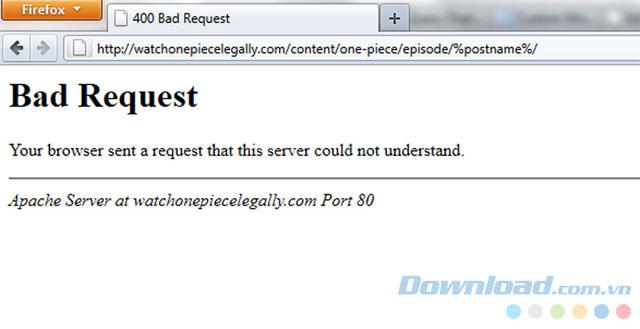
Error 400 Bad Request appears inside the browsing window. This error can appear on any operating system and browser.
For example, Internet Explorer , The webpage cannot be found message is indicated for error 400 Bad Request. IE title bar indicates HTTP 400 Bad Request or similar message.
Windows Updates also reports an HTTP 400 error, but displays as error code 0x80244016 or with the message WU_E_PT_HTTP_STATUS_BAD_REQUEST.
The 400 error reported along the path in the Microsoft Office application often appears as a server error: (400) Bad Request in a small on-screen pop-up.
Error 400 usually occurs when typing or pasting the wrong URL in the address bar, sometimes some common errors that many users encounter.
Note: Web servers running Microsoft IIS often provide more specific information about the cause of the 400 Bad Request error by adding a digital suffix after the 400 error, such as HTTP Error 400.1 - Bad Request, i.e. error Invalid Destination Header.
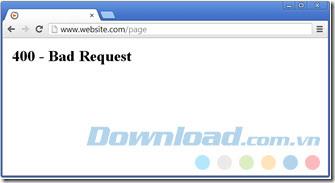
The main cause of the error 400 is due to entering the wrong URL or clicking on the wrong link from another source, such as articles, documents ... Usually this is a typo.
You only need to check the list followed by the main domain name (separated by /), characters not allowed in the URL, special characters ...
When encountering a 400 Bad Request error with Google services, many pages will report a 400 error when the cookie reading data is corrupt or too old.
Removing the DNS cookie will fix the 400 Bad Request error if the DNS record stored on the computer is outdated. To do this, simply enter ipconfig / flushdns from the Command Prompt window. Note that this is not the same as clearing the browser cache.
A cache containing a faulty copy of the website you are trying to access can cause a 400 error. Although clearing the cache may not completely fix the 400 error, it is also an option you should not ignore because It is pretty fast and easy.
Users can choose to diagnose the error right on the notification, similar to the 504 Gateway Timeout error, although this error is usually reported as a 400 Bad Request.
In some other rare cases, 2 servers take too long to connect with each other (Gateway Timeout error) but do not fix this 504 error, you can report the error as 400 Bad Request.
When uploading a file to the website and encountering this error, the possibility of error 400 is because the file is too big and the server rejected it.
If you get the error 400 in most accessed websites, the cause may be the computer or the Internet connection. Run network speed tests and check with your network service provider to make sure everything is working properly.
If the problem is not on your side, contact the website administrator for assistance. This will not only help you get to the webpage soon, but also be helpful information to the website management team.
The trick is, if the whole website is getting 400 Bad Request errors, look for Twitter for hashtags #websitedown, #facebookdown or #gmaildown . There will be other users who report this error, and you can refer to how to fix the error in the comments.
If the above methods do not really work, do not waste time downloading the website again and again. Come back another time, maybe the 400 error will go away?
How to pin comments on TikTok, TikTok allows users to pin comments easily. Here's how to pin comments on TikTok videos.
Instructions for Organizing a Q&A session on Facebook, Recently, Facebook has launched the feature to create a Q&A session, when you post a question for everyone to answer.
Instructions for installing and recording videos with Likee, Likee is an application that supports extremely beautiful and impressive video recording, and is loved by many young people today. The following,
How to export the list of meeting participants in Zoom, How to take attendance on Zoom is not difficult, it even allows you to export the list of students participating in the class.
How to change font on Xiaomi, Want to create a new image for Xiaomi device? Just follow the instructions below to change the font style and size above
Instructions for creating a mirror image effect on Picsart, Picsart is an application where users only need to perform a few simple steps to transform the photo.
How to add new fonts to Microsoft Word, Can't find the font you want to use for documents in Microsoft Word? Don't worry, you can install new fonts for Word according to these steps
How to turn off the computer screen and still have the computer running, How to turn off the PC screen and still have the computer running on Win 10/11? Very simple. Here's how to turn off the computer screen
To fix the “An unexpected error occurred” issue when logging in to Facebook, you can try the following steps
Users reported that their Facebook, Messenger and Instagram accounts were suddenly logged out and could not be accessed again, both on the app and web version.
Instructions on how to take photos on Tiktok are extremely simple. Tiktok is a famous application for recording and creating short videos on social networks. However, this application also
How to find and get Instagram links, Instagram is one of the most popular and easy-to-use social networking platforms today. However, because it is designed specifically for mobile,
Instructions for locking the mouse cursor when playing games on BlueStacks, Instructions for turning on/off the mouse cursor lock feature when playing games in the BlueStacks App Player emulator.
Instructions for installing and using Faceapp using an emulator on PC, Simple and easy instructions on how to install and use the Faceapp face editing app using an emulator on PC
Instructions for creating a cover photo group on Facebook, Creating a cover photo group is a feature that helps users set Facebook cover photos with many different images (maximum of 6 photos).
Learn how to effectively use the Stochastic Indicator for technical analysis on Bubinga. Explore advanced techniques to enhance your trading strategies
Instructions for adding angel wings to photos using PicsArt, PicsArt is a photo editing application used by many people today. Today WebTech360 will introduce the article
How to turn off the Just accessed notification on Zalo. This article WebTech360 will guide you to turn off the Just accessed notification under your Zalo chat name.
Instructions for blocking and unblocking accounts on TikTok. Similar to other social networking applications, TikTok also allows users to block someone's account
How to write a long status with a colorful background on Facebook, Today, WebTech360 will introduce some steps to post a long status with a colorful background on Facebook,

